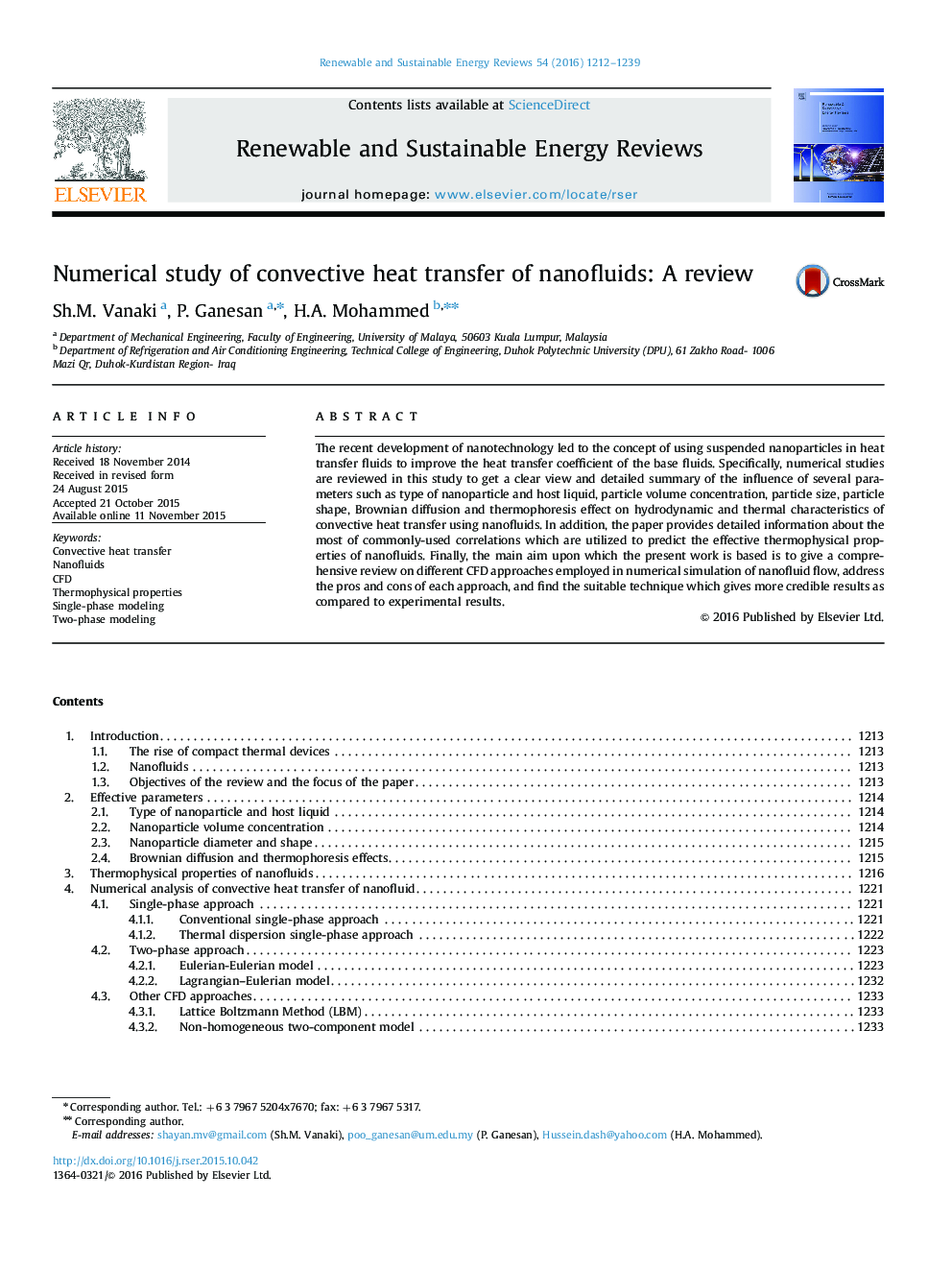| Article ID | Journal | Published Year | Pages | File Type |
|---|---|---|---|---|
| 1749910 | Renewable and Sustainable Energy Reviews | 2016 | 28 Pages |
The recent development of nanotechnology led to the concept of using suspended nanoparticles in heat transfer fluids to improve the heat transfer coefficient of the base fluids. Specifically, numerical studies are reviewed in this study to get a clear view and detailed summary of the influence of several parameters such as type of nanoparticle and host liquid, particle volume concentration, particle size, particle shape, Brownian diffusion and thermophoresis effect on hydrodynamic and thermal characteristics of convective heat transfer using nanofluids. In addition, the paper provides detailed information about the most of commonly-used correlations which are utilized to predict the effective thermophysical properties of nanofluids. Finally, the main aim upon which the present work is based is to give a comprehensive review on different CFD approaches employed in numerical simulation of nanofluid flow, address the pros and cons of each approach, and find the suitable technique which gives more credible results as compared to experimental results.
